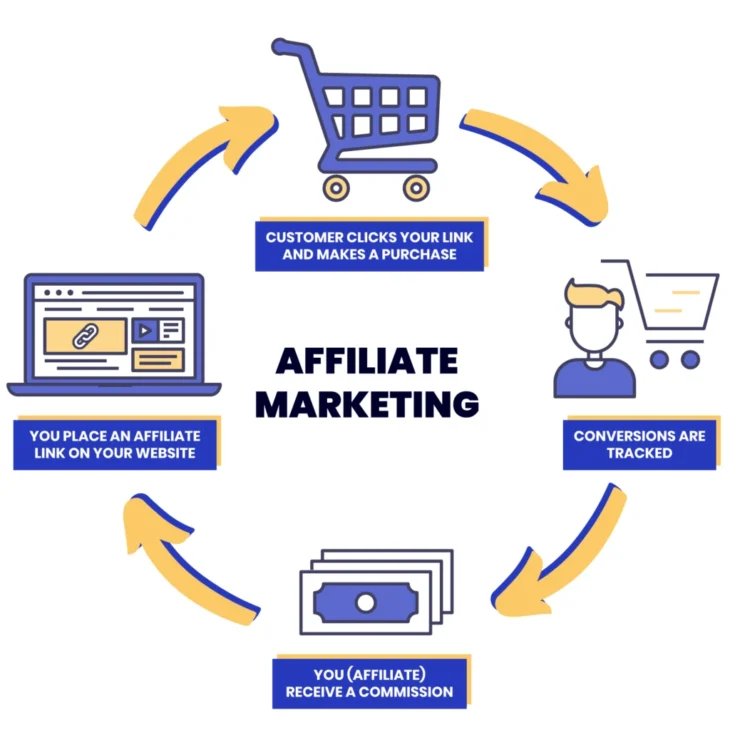Starting affiliate marketing without money seems tough, right? But it isn’t. You can begin this journey with the right steps and dedication. The Internet provides many opportunities to earn without upfront costs.
You only need to understand the process and put in the effort. Whether you’re a student, a stay-at-home parent, or someone looking to make extra income, affiliate marketing offers a flexible and scalable way to succeed.
Here, I’ll guide you through easy and effective strategies to get started. No jargon, no fluff, just practical advice. Let’s dive in and make your affiliate marketing dream a reality. Ready to learn? Let’s get started!
Table of Contents
Toggle1. Choose Your Niche
Starting affiliate marketing begins with choosing your niche. This step sets the foundation for everything else. Think about what interests you. What are you passionate about? Maybe it’s fitness, technology, or cooking. Your niche should be something you enjoy. This way, creating content won’t feel like a chore.
Why Your Niche Matters
A well-chosen niche helps you target a specific audience. When you focus on a particular area, you can become an expert. Your audience will trust your recommendations. For example, if you love fitness, promoting health products feels natural. Your audience sees you as a credible source.
Research Your Niche
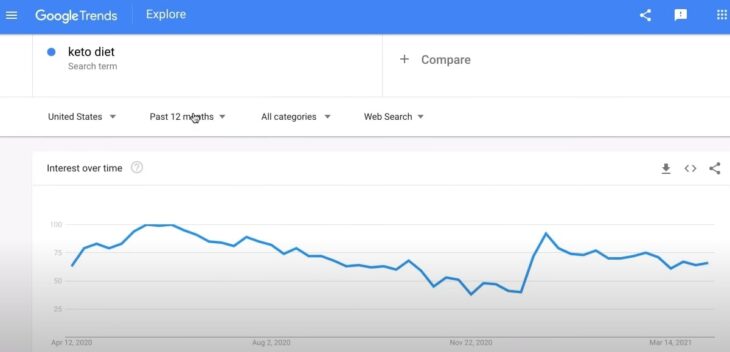
Do some research. Look at what other affiliate marketers are doing. Find gaps in the market. Use tools like Google Trends to see what’s popular. Check forums and social media to understand what people are talking about. This research helps you find a profitable niche.
Start Narrow, Then Expand
It’s smart to start with a narrow focus. This helps you build a dedicated audience. Over time, you can expand. For instance, if you start with yoga for beginners, you can later include advanced yoga techniques, equipment reviews, and more.
Stay Passionate
Remember, passion is key. If you choose a niche just because it seems profitable, you might lose interest. Stick with something you love. This keeps you motivated and helps you produce better content.
2. Create Your Platform
Your platform is where you share content and promote affiliate products. It could be a blog, YouTube channel, or social media account. This platform will be your hub for engaging with your audience and driving traffic to affiliate links.
Choose the Right Platform
First, decide which platform suits you best. Do you enjoy writing? Start a blog. Prefer making videos? YouTube might be the right choice. Good with quick updates and visuals? Instagram or TikTok could work. Choose a platform that matches your skills and interests.
Setting Up Your Blog
If you choose a blog, use a platform like WordPress. It’s user-friendly and offers many customization options. Choose a clean, professional theme. Your blog should be easy to navigate. Write an “About Me” page to introduce yourself and your niche.
Creating a YouTube Channel
For YouTube, focus on quality content. Invest in a good camera and microphone. Plan your videos. Make them informative and engaging. Optimize your video titles and descriptions with keywords. This helps people find your videos.
Social Media Accounts
Social media platforms like Instagram and TikTok are great for quick content. Post regularly. Use hashtags to reach a wider audience. Engage with your followers through comments and messages. Share behind-the-scenes content to build a personal connection.
Build Your Audience
No matter the platform, building an audience takes time. Be consistent with your posts. Share valuable content. Engage with your audience by responding to comments and messages. Build trust by being genuine and helpful.
Monetize Your Platform
Once you have an audience, start monetizing. Join affiliate programs related to your niche. Share affiliate links in your blog posts, video descriptions, or social media posts. Be transparent about using affiliate links. This builds trust with your audience.
3. Join Affiliate Programs
Joining affiliate programs is where you start earning. These programs connect you with companies that pay commissions for promoting their products. The key is to choose the right programs for your niche and audience.
Finding Affiliate Programs
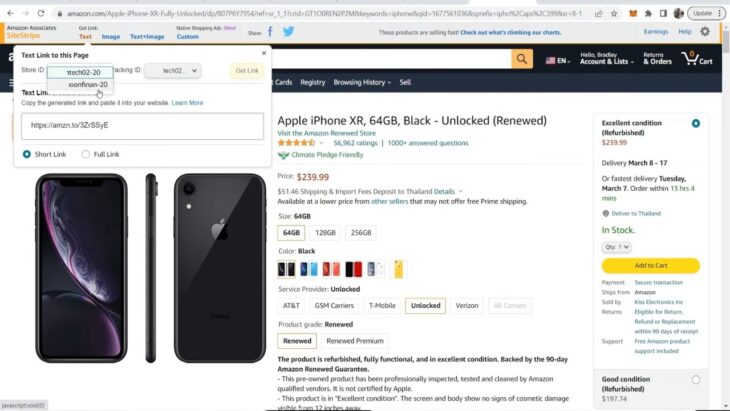
Start by searching for affiliate programs related to your niche. Use platforms like ClickBank, ShareASale, or Amazon Associates. Many companies also have their own affiliate programs. Check their websites for details. Look for programs offering high commissions and reliable payouts.
Evaluate Programs
Not all affiliate programs are created equal. Evaluate them based on commission rates, payment terms, and support. Higher commission rates mean more earnings per sale. Look for programs with good support and resources. This helps you succeed.
Sign Up and Get Approved
Most affiliate programs require an application. Be honest about your platform and audience size. Some programs might have specific requirements. For example, Amazon Associates requires a certain number of sales within a time frame. Make sure you meet the criteria before applying.
Promote Affiliate Links
Once approved, you’ll receive unique affiliate links. Promote these links on your platform. Place them in blog posts, video descriptions, or social media posts. Make sure the products align with your content. This keeps your promotions relevant and trustworthy.
Create Quality Content
To drive sales, create quality content around your affiliate products. Write reviews, tutorials, or comparison posts. Make your content helpful and informative. This encourages your audience to click on your links and make purchases.
Track Your Performance
Use analytics tools provided by affiliate programs to track your performance. Monitor clicks, conversions, and earnings. This data helps you understand what works and what doesn’t. Adjust your strategies based on these insights to improve your results.
Stay Compliant
Each affiliate program has its own rules. Follow them to stay compliant. Disclose your affiliate links to your audience. Transparency builds trust and keeps you within legal guidelines.
4. Make Quality Content
Quality content is the heart of affiliate marketing. It attracts your audience, builds trust, and drives sales. Creating valuable content sets you apart from others and keeps your audience coming back for more.
Understand Your Audience
Know your audience. Understand their needs, interests, and problems. This helps you create content that resonates with them. Use tools like Google Analytics or social media insights to gather data about your audience.
Types of Content

Different types of content work well for affiliate marketing. Blog posts, product reviews, tutorials, and comparison articles are popular choices. Each type serves a different purpose. Reviews help people make buying decisions. Tutorials show how to use a product. Choose the type that best fits your niche and audience.
Write Engaging Posts
For blogs, write engaging posts. Use a clear and friendly tone. Break your content into short paragraphs. Use headings and bullet points for easy reading. Include personal experiences and stories. This makes your content relatable and trustworthy.
Make Informative Videos
If you prefer videos, make them informative and engaging. Use clear visuals and sound. Keep your videos concise and to the point. Demonstrate products, share tips, or provide tutorials. Optimize your video titles and descriptions with relevant keywords to reach a wider audience.
Use High-Quality Images
Visuals enhance your content. Use high-quality images and graphics. They make your posts and videos more appealing. For blogs, use images to break up text and illustrate points. For videos, use clear and professional visuals.
SEO Optimization
Optimize your content for search engines. Use relevant keywords in your titles, headings, and throughout your content. This helps your audience find you through search engines like Google. Use tools like Yoast SEO for guidance.
Be Honest and Transparent
Be honest in your content. Share genuine opinions and experiences. Disclose your affiliate relationships. Transparency builds trust with your audience. They appreciate honesty and are more likely to follow your recommendations.
Consistent Posting
Post regularly. Consistency keeps your audience engaged. Create a content calendar to plan your posts. Regular updates show your audience that you are active and committed.
5. Get Traffic
Driving traffic to your platform is crucial for affiliate marketing success. Without visitors, your content won’t generate sales. Here are strategies to increase your traffic.
Use Social Media

Social media platforms like Facebook, Instagram, Twitter, and TikTok can drive significant traffic. Share your content regularly. Engage with your followers through comments and messages. Use relevant hashtags to reach a wider audience. Join groups and communities related to your niche and share your content there.
Leverage SEO
Search Engine Optimization (SEO) helps your content rank higher in search engine results. Use relevant keywords in your titles, headings, and content. Write meta descriptions that encourage clicks. Create high-quality backlinks by guest posting on other blogs or collaborating with influencers.
Build an Email List
Email marketing is a powerful tool. Offer something valuable, like a free ebook or a guide, in exchange for email sign-ups. Send regular newsletters with your latest content and promotions. Personalize your emails to engage your audience.
Collaborate with Influencers
Influencers have established audiences that trust their recommendations. Collaborate with influencers in your niche. They can share your content with their followers, driving traffic to your platform. Offer them a commission for sales generated through their referrals.
Post on Forums and Communities
Join forums and online communities related to your niche. Contribute valuable insights and share your expertise. Include links to your content when relevant. Platforms like Reddit, Quora, and niche-specific forums can drive targeted traffic to your site.
Use Paid Advertising
If you have a small budget, consider using paid advertising. Platforms like Google Ads, Facebook Ads, and Instagram Ads allow you to target specific audiences. Even a small investment can boost your visibility and drive traffic.
Write Guest Posts
Guest posting on other blogs in your niche can drive traffic to your platform. Write high-quality posts that provide value to the host blog’s audience. Include a link to your site in your author bio. This not only drives traffic but also improves your SEO through backlinks.
Create Shareable Content
Create content that people want to share. Infographics, videos, and list posts are highly shareable. Make your content visually appealing and easy to share on social media. The more your content gets shared, the more traffic you’ll drive.
Engage with Your Audience
Engagement keeps your audience coming back. Respond to comments on your blog and social media. Ask questions and encourage discussions. Building a community around your content increases loyalty and drives repeat traffic.
6. Connect with Audience
Connecting with your audience is crucial. Building a relationship with your followers fosters trust and loyalty. This increases the chances of them following your recommendations.
Engage on Social Media
Social media platforms offer a direct way to interact with your audience. Respond to comments and messages. Share behind-the-scenes content to show your personality. Host live sessions to engage in real-time. Polls and Q&A sessions also boost engagement.
Respond to Comments
On your blog or YouTube channel, always respond to comments. Acknowledge feedback, answer questions, and thank users for their input. This interaction makes your audience feel valued and encourages them to return.
Personalize Your Content
Personalized content resonates more with your audience. Address them directly in your posts. Use their names in email marketing campaigns. Tailor your content to their interests and needs. This shows you care about them as individuals.
Create a Community
Build a community around your content. Start a Facebook group or an online forum. Encourage discussions and share exclusive content. A strong community creates a sense of belonging and encourages members to support each other and your platform.
Share User-Generated Content
Encourage your audience to create content related to your niche. Share their posts, reviews, or testimonials on your platform. This not only provides social proof but also makes your audience feel appreciated.
Host Contests and Giveaways
Contests and giveaways are great for engagement. Offer products related to your niche as prizes. Encourage your audience to participate by liking, sharing, or commenting on your posts. This boosts visibility and fosters a sense of excitement.
Be Transparent and Authentic
Honesty and authenticity build trust. Be transparent about your affiliate relationships. Share genuine opinions and experiences. Your audience will appreciate your honesty and be more likely to trust your recommendations.
Provide Value
Always aim to provide value in your content. Solve problems, share useful tips, and offer valuable insights. When your audience sees the value in your content, they’ll be more engaged and loyal.
Ask for Feedback
Invite your audience to share their thoughts and suggestions. Use surveys, polls, or direct questions in your posts. This feedback helps you improve your content and shows that you value their opinions.
7. Grow Your Efforts
Scaling your affiliate marketing efforts helps you maximize your earnings. Once you’ve established a foundation, it’s time to expand and grow your business. Here are strategies to help you scale effectively.
Diversify Your Content
Expand the types of content you create. If you started with blog posts, consider adding videos, podcasts, or infographics. Diversifying your content reaches a broader audience and keeps your platform fresh and engaging.
Explore New Platforms
Don’t limit yourself to one platform. If you have a successful blog, consider starting a YouTube channel or a podcast. Each platform has its own audience and growth potential. More platforms mean more traffic and opportunities for affiliate sales.
Increase Posting Frequency
Posting more frequently keeps your audience engaged and attracts new visitors. Create a content calendar to plan your posts. Aim to publish high-quality content regularly. Consistency helps maintain audience interest and improves your platform’s SEO.
Collaborate with Others
Collaborations can boost your reach. Partner with other influencers, bloggers, or brands in your niche. Co-create content, host joint webinars, or run cross-promotions. Collaborations expose your platform to a wider audience and bring fresh perspectives.
Optimize Your SEO
Continue optimizing your content for search engines. Use advanced SEO techniques like backlink building, keyword research, and optimizing for featured snippets. Higher search rankings lead to more organic traffic and potential affiliate sales.
Invest in Paid Advertising
As your earnings grow, reinvest some profits into paid advertising. Platforms like Google Ads, Facebook Ads, and Instagram Ads can significantly boost your visibility. Target specific audiences to get the most out of your ad spend.
Analyze and Adjust
Regularly analyze your performance. Use tools like Google Analytics, social media insights, and affiliate program dashboards to track traffic, engagement, and sales. Identify what’s working and what isn’t. Adjust your strategies based on this data to improve your results.
Expand Your Affiliate Programs
Join more affiliate programs to diversify your income streams. Research new programs related to your niche. Promote a variety of products to appeal to different segments of your audience. This diversification reduces risk and increases earning potential.
Automate Where Possible
Use automation tools to streamline your processes. Email marketing platforms like Mailchimp can automate your email campaigns. Social media scheduling tools like Buffer or Hootsuite can manage your posts. Automation saves time and ensures consistency.
Keep Learning
Stay updated with industry trends and best practices. Follow affiliate marketing blogs, join forums, and attend webinars. Continuous learning helps you adapt to changes and implement new strategies to grow your business.
8. Use Free Tools
Starting affiliate marketing without spending money requires leveraging free tools. These tools help you create content, manage your platform, and optimize your marketing efforts. Here are some valuable free tools to consider.
Content Creation Tools
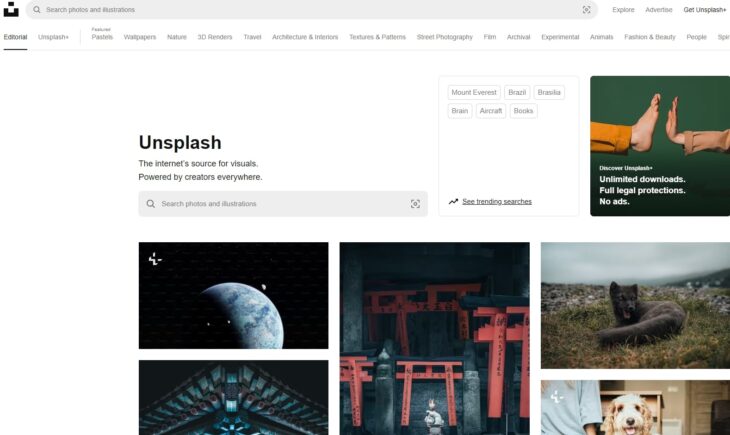
- Canva: Canva is an excellent tool for creating graphics, social media posts, and infographics. It offers a range of templates and design elements to enhance your content.
- Grammarly: Grammarly helps you write clear and error-free content. It checks your grammar, spelling, and punctuation, ensuring your posts are polished and professional.
- Pexels and Unsplash: These sites provide high-quality, royalty-free images. Use them to make your blog posts and social media content visually appealing.
Website and SEO Tools
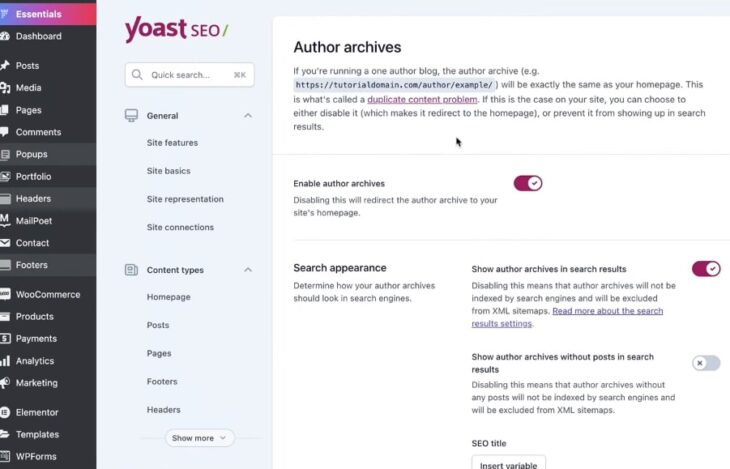
- WordPress: WordPress is a popular, free platform for building and managing your blog. It offers many themes and plugins to customize your site.
- Yoast SEO: Yoast SEO is a free plugin for WordPress. It helps optimize your content for search engines, improving your chances of ranking higher in search results.
- Google Analytics: Google Analytics tracks your website traffic and user behavior. It provides valuable insights into how visitors interact with your site, helping you optimize your content and strategies.
Social Media Management Tools
- Buffer: Buffer allows you to schedule and manage your social media posts. It helps you maintain a consistent posting schedule without manually posting every day.
- Hootsuite: Hootsuite is another social media management tool. It supports multiple platforms and offers features for scheduling, monitoring, and analyzing your social media activity.
Email Marketing Tools
- Mailchimp: Mailchimp offers a free plan for building and managing your email list. It includes features for designing emails, automating campaigns, and tracking performance.
- MailerLite: MailerLite is another free email marketing tool. It offers drag-and-drop email design, automation, and analytics to help you engage your audience effectively.
Keyword Research Tools
- Ahrefs: Ahrefs offers a comprehensive suite of tools for keyword research, including keyword suggestions, search volume, and competition analysis. It’s great for identifying high-potential keywords.
- SEMrush: SEMrush provides detailed keyword research data, including search volume, keyword difficulty, and competitive analysis. It’s a powerful tool for optimizing your SEO strategy.
- Moz: Moz’s keyword explorer tool helps you find relevant keywords, analyze their potential, and track your rankings over time. It’s user-friendly and provides valuable insights.
- Ubersuggest: Ubersuggest provides keyword suggestions and data on search volume, competition, and trends. It helps you find the best keywords to target in your content.
- Google Keyword Planner: Google Keyword Planner is a free tool for researching keywords. It provides insights into keyword popularity and competition, helping you optimize your SEO strategy.
Collaboration and Project Management Tools
- Trello: Trello helps you organize tasks and projects. Create boards and lists to manage your content calendar, track progress, and collaborate with team members.
- Slack: Slack is a communication tool for teams. Use it to coordinate with collaborators, share updates, and manage projects efficiently.
9. Track and Improve
Tracking your performance and making improvements is essential for successful affiliate marketing. Regular monitoring helps you understand what works and what needs adjustment. Here are some key methods and tools to help you track and improve your efforts.
Use Analytics Tools
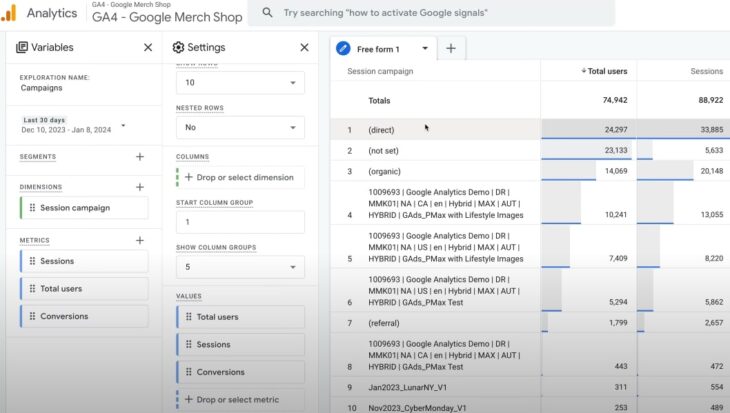
- Google Analytics: This tool tracks your website traffic, user behavior, and conversion rates. It provides detailed insights into how visitors interact with your content, helping you identify successful strategies and areas for improvement.
- Affiliate Program Dashboards: Most affiliate programs offer dashboards to track your performance. Monitor clicks, conversions, and earnings to understand which products and strategies generate the most revenue.
Monitor Key Metrics
- Traffic Sources: Identify where your traffic comes from. This helps you focus on the most effective channels, whether it’s social media, search engines, or direct visits.
- Conversion Rates: Track how many visitors complete desired actions, like clicking on affiliate links or making purchases. High conversion rates indicate effective content and user engagement.
- Bounce Rates: Monitor bounce rates to see how many visitors leave your site after viewing only one page. High bounce rates may indicate irrelevant content or poor user experience.
Use A/B Testing
- Experiment with Variations: A/B testing involves comparing two versions of a page or element to see which performs better. Test different headlines, images, calls to action, and layouts to optimize your content.
- Analyze Results: Use the data from A/B tests to make informed decisions. Implement changes that improve user engagement and conversions.
Optimize SEO
- Keyword Performance: Regularly check how your targeted keywords perform. Adjust your SEO strategy based on search volume, competition, and ranking changes.
- Content Updates: Refresh your content to keep it relevant and valuable. Update outdated information, add new insights, and optimize for current keywords.
Gather Feedback
- User Surveys: Collect feedback from your audience through surveys. Ask about their preferences, challenges, and suggestions for improvement.
- Comments and Reviews: Pay attention to comments and reviews on your content. They provide direct insights into what your audience likes and dislikes.
Continuous Learning
- Stay Informed: Keep up with industry trends and best practices. Follow affiliate marketing blogs, attend webinars, and join online communities.
- Implement New Strategies: Based on your learnings, try new approaches and strategies. Continuous experimentation and adaptation are key to growth.
10. Stay Updated
Staying updated with the latest trends and changes in affiliate marketing is crucial. The digital landscape evolves rapidly, and keeping up ensures you remain competitive and effective in your efforts. Here’s how to stay informed and adapt to changes.
Follow Industry Blogs

- Affiliate Marketing Blogs: Regularly read blogs like Neil Patel, Authority Hacker, and Smart Passive Income. They provide insights, tips, and updates on the latest trends and best practices in affiliate marketing.
Join Online Communities
- Forums and Groups: Participate in forums like Warrior Forum and Reddit’s r/affiliatemarketing. Join Facebook groups dedicated to affiliate marketing. These communities offer valuable advice, support, and real-time updates from other marketers.
Attend Webinars and Conferences
- Online Webinars: Attend webinars hosted by industry experts. They cover various topics, from SEO strategies to content marketing, and offer the latest insights and techniques.
- Affiliate Marketing Conferences: Consider attending conferences like Affiliate Summit or Affiliate World. These events provide networking opportunities and in-depth knowledge from leading professionals.
Subscribe to Newsletters
- Industry Newsletters: Subscribe to newsletters from affiliate networks and marketing experts. They deliver the latest news, tips, and trends directly to your inbox.
Use Social Media
- Follow Influencers: Follow key influencers and thought leaders in the affiliate marketing industry on platforms like Twitter and LinkedIn. They often share valuable content and updates.
Monitor Competitors
- Competitive Analysis: Regularly check what your competitors are doing. Analyze their strategies, content, and promotional methods. This helps you identify successful tactics and areas where you can improve.
Keep Up with Algorithm Changes
- Search Engine Updates: Stay informed about changes in search engine algorithms, especially Google. Updates can impact your SEO efforts and traffic, so it’s important to adapt quickly.
Experiment and Innovate
- Try New Strategies: Don’t hesitate to experiment with new tactics. Whether it’s a different type of content, a new promotion method, or an emerging platform, testing new ideas can lead to growth.
Adapt to Trends: Keep an eye on emerging trends in digital marketing. Adapt your strategies to leverage these trends, staying ahead of the competition.
Continuous Learning
- Online Courses: Enroll in online courses related to affiliate marketing, SEO, and digital marketing. Platforms like Coursera, Udemy, and LinkedIn Learning offer valuable courses to enhance your skills.
- Books and Publications: Read books and publications on affiliate marketing and digital trends. They provide in-depth knowledge and long-term strategies for success.
Conclusion
Starting affiliate marketing with no money is challenging, but entirely possible with the right approach. Choose a niche you are passionate about. Create a platform that suits your strengths. Join affiliate programs that align with your interests.
Focus on making quality content that provides value. Drive traffic through SEO, social media, and other strategies. Engage and connect with your audience to build trust. Continuously grow and diversify your efforts using free tools and resources.
Track your performance and make improvements. Stay updated with industry trends and best practices. By following these steps, you can build a successful affiliate marketing business from scratch. The key is consistency, dedication, and a willingness to learn and adapt. Start today and watch your efforts pay off.
